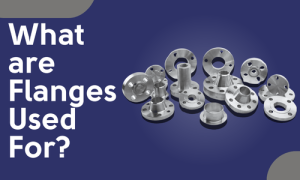Titanium round bars are critical in various industries, including aerospace, medical, automotive, and chemical processing. Known for their exceptional strength-to-weight ratio, corrosion resistance, and biocompatibility, they are essential for high-performance and reliability applications. This article delves into the intricate manufacturing process of titanium round bars, highlighting each step from raw material selection to final inspection.
Raw Material Selection
The journey of a titanium round bar begins with carefully selecting raw materials. Titanium is sourced primarily from rutile and ilmenite ores. These ores undergo a series of processes to extract pure titanium. The most common method is the Kroll process, which involves converting titanium ores into titanium tetrachloride (TiCl4) and then reducing it with magnesium to produce a titanium sponge.
Melting and Alloying
Once the titanium sponge is obtained, it is melted to create a uniform alloy. This is typically done using vacuum arc remelting (VAR) or electron beam melting (EBM). Both methods ensure the removal of impurities and the creation of a homogenous titanium alloy. The choice of alloying elements, such as aluminium, vanadium, or molybdenum, depends on the specific requirements of the end product. These elements enhance properties like strength, flexibility, and corrosion resistance.
Forming the Ingots
After melting, the liquid titanium alloy is poured into moulds to form ingots. These nuggets are large, solid blocks that are the starting material for further processing. The nuggets are allowed to cool and solidify under controlled conditions to prevent the formation of internal defects. Once cooled, the ingots undergo ultrasonic testing to ensure they are free from cracks and inclusions.
Primary Forging
The next step in the manufacturing process is primary forging. The titanium ingots are heated to a specific temperature to become malleable. They are then subjected to hammering and pressing operations to reduce their cross-sectional area and shape them into billets or blooms. This process refines the internal grain structure of the titanium and improves its mechanical properties.
Rolling
Following primary forging, the billets or blooms are further processed through rolling. Rolling involves passing the metal through a series of rollers to achieve the desired diameter and surface finish. This step can be carried out at high temperatures (hot rolling) or room temperature (cold rolling), depending on the required mechanical properties and tolerances. Cold rolling, in particular, enhances the strength and surface finish of the titanium round bars.
Heat Treatment
Heat treatment is a crucial phase in the production of titanium round bars. The bars are subjected to precise heating and cooling cycles to enhance their mechanical properties. Common heat treatment processes include annealing, solution treatment, and ageing. Annealing, for example, relieves internal stresses and enhances flexibility, while ageing increases the bars’ strength and hardness.
Surface Finishing and Inspection
The final steps in the manufacturing process involve surface finishing and quality inspection. The titanium round bars undergo surface treatments such as pickling, polishing, or sandblasting to achieve the desired surface finish and remove any oxidation or scale. After surface finishing, the bars are meticulously inspected for dimensional accuracy, surface defects, and mechanical properties. Non-destructive testing methods like ultrasonic testing and X-ray inspection are commonly employed to ensure the highest quality standards.
Summary
Manufacturing titanium round bars is a complex and meticulous process requiring advanced technology and precision at every stage. Each step is crucial in producing high-quality titanium round bars that meet stringent industry standards, from selecting the right raw materials to the final inspection. The resulting product is a testament to the capabilities of modern metallurgical engineering, providing essential components for some of the most demanding applications in the world.




